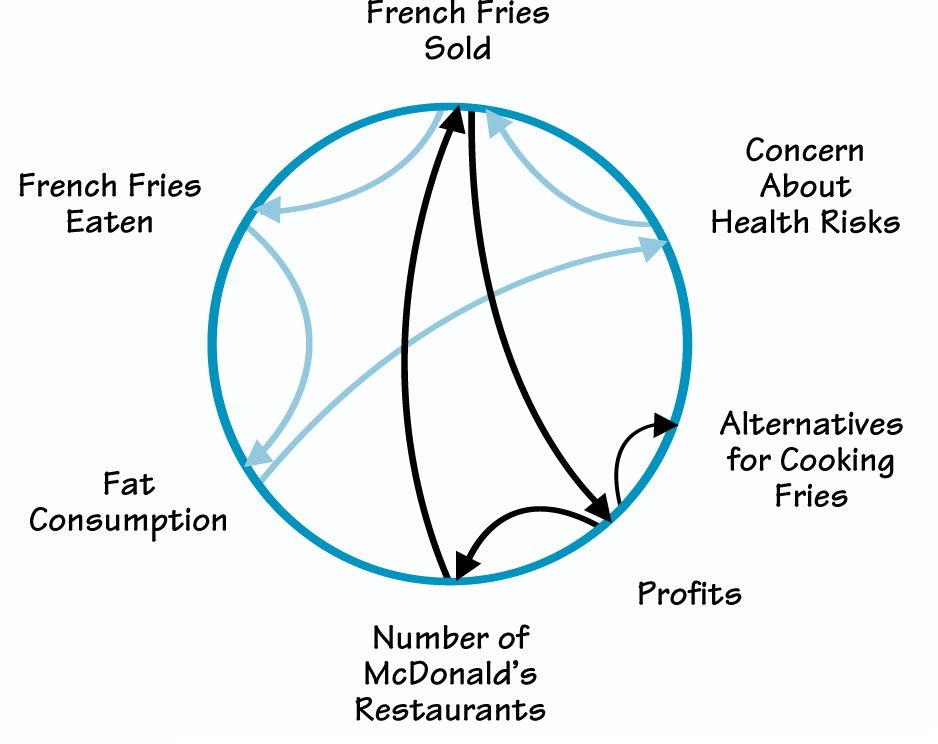Adopt a big-picture, long-term perspective
- Better anticipate the ripple effects of your actions.
- Begin to identify places where relatively small movements can have a large, positive impact.
- See how you may be getting in other people’s way—and how you and your counterparts can help each other for the benefit of the whole.
- Gain respect for the power of delays—the gap between when you take an action and when its effects show up.
- Form the kinds of relationships that are vital for initiating and sustaining system-level change.
Send us your recommendations for practices and tools.
Systems Archetypes
All complex systems—whether a friendship, a hospital, or the world economy—tend to behave in similar ways. The Systems Archetypes are a set of stories that describe these common patterns of behavior. People easily recognize these stories from their work and personal lives, and don’t need detailed knowledge of Systems Thinking to be able to apply them. Because the Systems Archetypes are generic and appear in many different settings, they help people move from seeking to assign blame for problems to inquiry.
Accidental Adversaries: In this common storyline, two parties form a partnership because it’s to their mutual advantage. At a certain point, one of the parties takes an action that is beneficial to them, even though it unintentionally causes harm to the other party. The key to avoiding this negative dynamic is for the parties to keep each other informed about any planned actions that might affect their partner.
Accidental Adversaries
Tragedy of the Commons: This common storyline often plays out in environmental settings, but also has a role in interpersonal relationships. In it, a number of individuals or groups draw on a shared, seemingly unlimited resource—such as a stock of fish in the ocean or an assistant who works for several managers. The more demand the users put on the resource, the more it deteriorates (fish stocks fall, the assistant has less time for each manager). As the resource becomes more scarce or deteriorates, the users intensify their use (fishers race to catch as many fish as possible, managers try to get more and more of the assistant’s time). Eventually the resource is depleted (the fish are gone, the assistant quits).
Tragedy of the Commons
Fixes That Backfire: A person or organization has a problem and takes action to solve it. The fix works in the short run, but over the longer term, the problem worsens. The person takes the same action again, with the same positive result in the short term and negative result in the long run. Because the fix seemed successful, people tend to blame the recurrence of the problem on outside factors instead of reflecting on their own role.
Fixes That Backfire
Systems Mapping

A number of tools exist for “seeing systems,” ranging from simple hand-drawn clustering techniques to computer-based simulation models. At the core of all of these approaches is identifying different elements of a system and the interconnections between them. As you explore your role in the system or systems that are important to you by experimenting with systems mapping tools, remember that even a pen-and-paper approach can provide you with important insights.